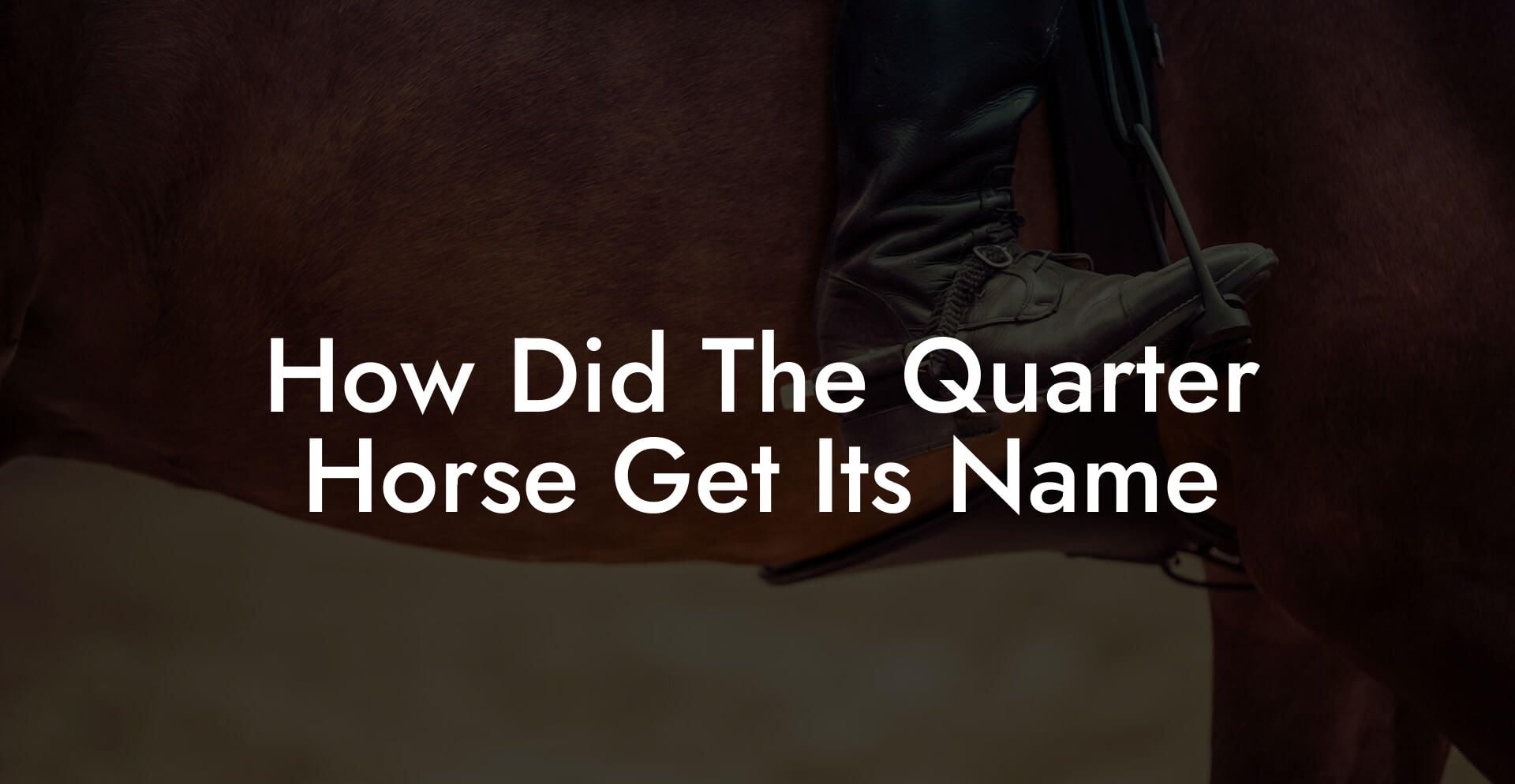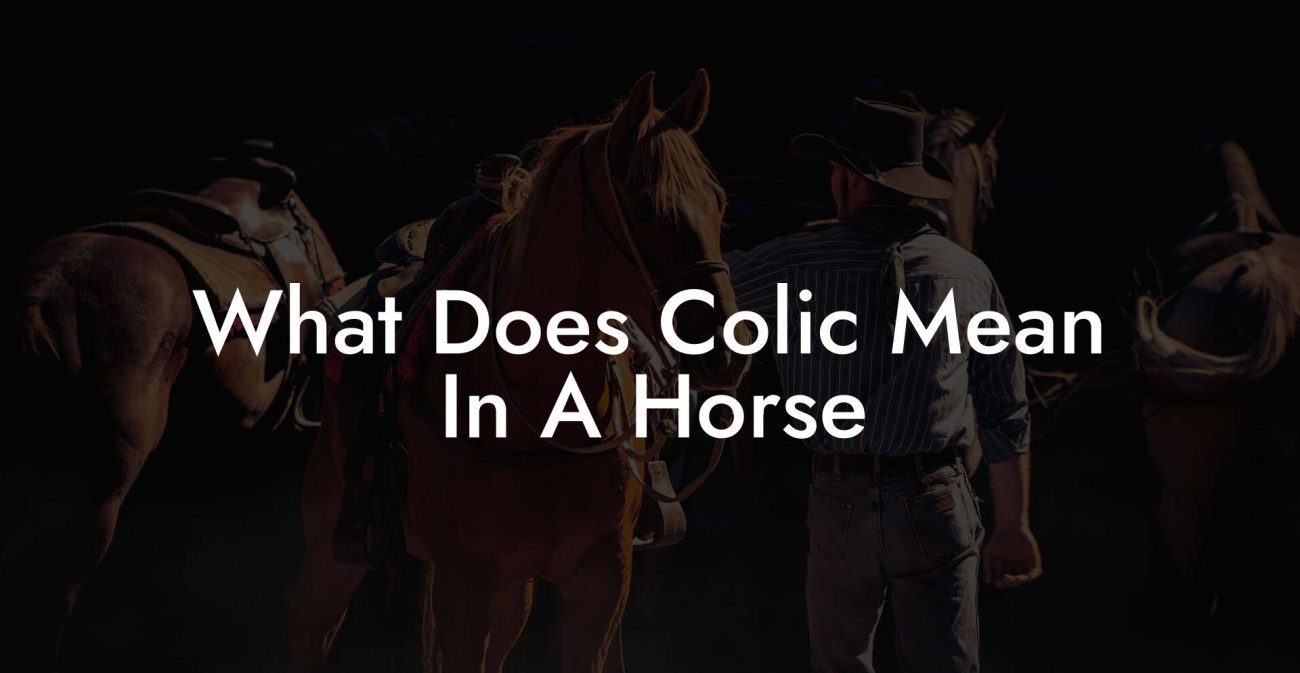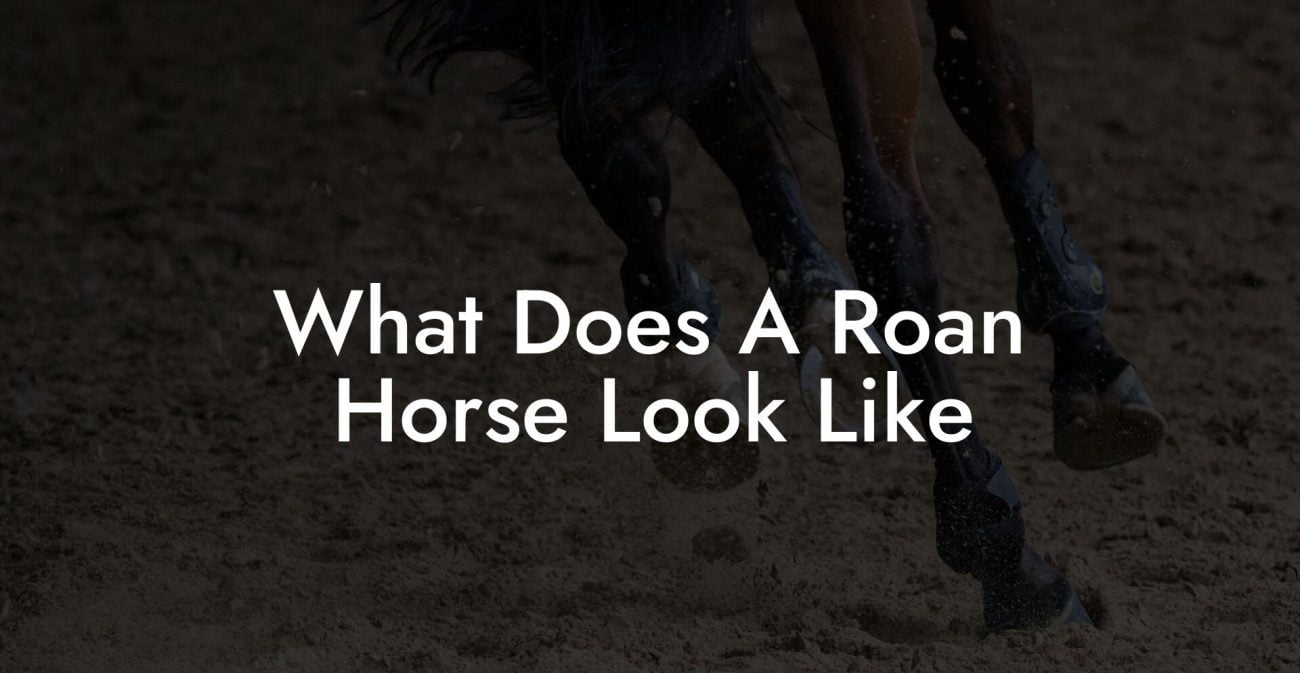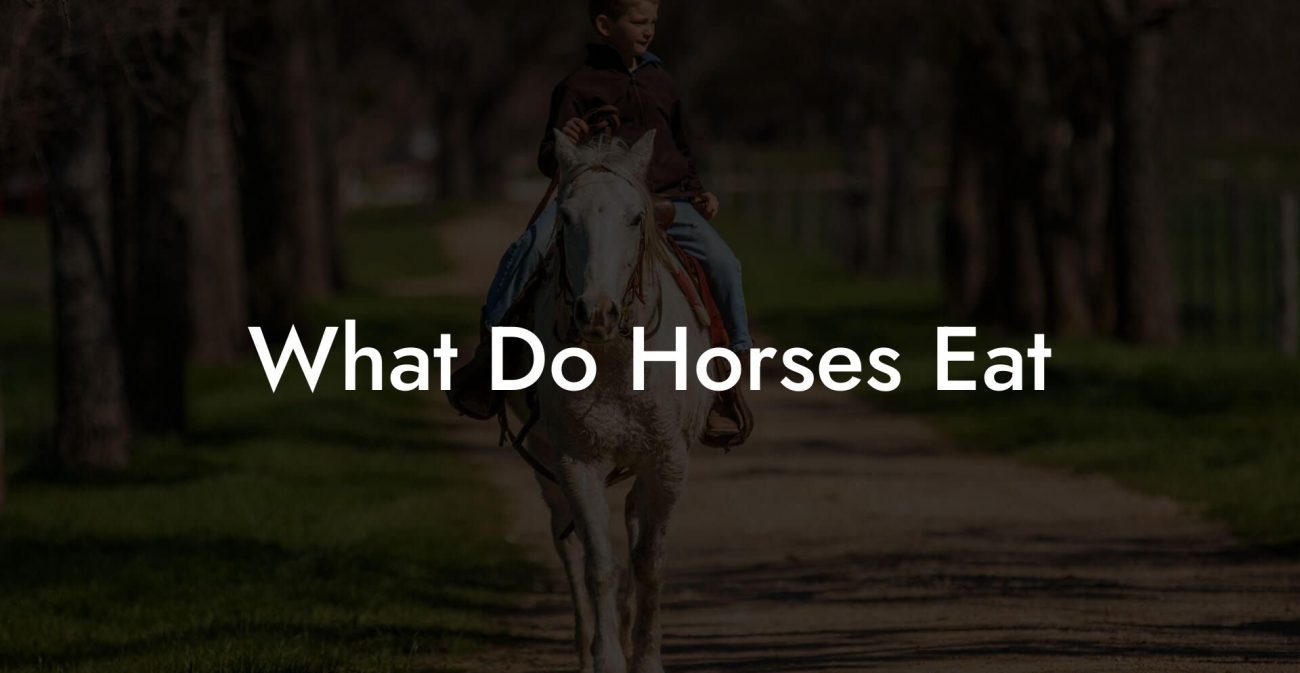Ever wondered how a breed of horses, as iconic as they are speedy, got the name that screams both heritage and hustle? Let’s dive into the fascinating and quirky backstory of the Quarter Horse, a true American legend whose name isn’t just a measure of distance, but a badge of honor for power, agility, and a unique cult status in the equestrian world. Whether you're a Gen-Z enthusiast or a millennial riding the wave of modern horse care trends, this deep dive sheds light on the mystery behind the name, the rich tapestry of its history, and how its legacy influences the way we care for horses today.
Quick Links to Useful Sections
- Where Does the Name "Quarter Horse" Come From?
- The Rich History Behind the Quarter Horse
- How Quarter Horses Shaped the American West
- The Quarter Horse's Phenomenal Physical Traits
- Modern Quarter Horse Care: Blending Tradition with Innovation
- Unique Traits and Common Misconceptions: Myths and Legends Unraveled
- Caring for Your Quarter Horse: Practical Tips for the Modern Rider
- Resources and Community Support: Your Next Steps
- Quarter Horse Care and Training: Integrating Modern Trends
- FAQs on the Quarter Horse Legacy and Modern Care
- Your Journey with the Legendary Quarter Horse
Where Does the Name "Quarter Horse" Come From?
The term "Quarter Horse" might sound like it’s referring to a monetary fraction of something, but rest assured, it's not about your spare change. The name actually comes from the breed's remarkable ability to sprint a quarter-mile faster than any other horse. In the 18th and 19th centuries, horse racing was all about quick bursts of speed over short distances, and these horses became legendary for their explosive power in the quarter-mile dash. Their agility, speed, and stamina turned them into the go-to choice for both racing and working cattle.
In the dusty arenas and open plains of early America, a quarter of a mile was just enough distance for these horses to unleash a mighty burst of energy, almost like the equine equivalent of a TikTok challenge. Over time, "Quarter Horse" became synonymous not only with speed but also with a rugged spirit and a community-driven work ethic that aligns perfectly with modern ideas of endurance and hustle.
Today, in everything from competitive barrel racing to recreational trail riding, the Quarter Horse stands as a symbol of reliability and versatility. Understanding its name means appreciating how a simple distance measure evolved into an emblem of equine excellence.
The Rich History Behind the Quarter Horse
The roots of the Quarter Horse run deep into the soil of American tradition. Bred from Spanish Mustangs, English Thoroughbreds, and native stock, these horses emerged as the ultimate work and racing horse during the colonial era. Their story isn’t just about speed; it’s a narrative of adaptation, practicality, and the raw, untamed spirit of the American frontier.
Picture the scene: vast landscapes, pioneering settlers, and the need for a horse that could handle a variety of tasks, from herding cattle to racing against the clock. The Quarter Horse was built for these challenges. Early breeders quickly recognized that horses capable of covering a quarter-mile with unmatched speed would excel in both performance and labor. Thus, they selectively bred traits emphasizing quick acceleration and agile maneuverability. This practice resulted in a horse that’s not only fast off the mark but also incredibly sure-footed and strong, able to carry a rider over rugged terrain with ease.
As these horses became more integrated into the fabric of American life, their influence spread beyond the racetracks and cattle drives. They became cultural icons, representing a blend of practicality and the free-spirited nature of the Western lifestyle. Their storied past is replete with tales of underdog victories and heroic deeds, all contributing to an enduring legacy that today inspires both competitive riders and casual enthusiasts alike.
Modern breeders continue to celebrate this heritage by preserving the distinctive physical and mental traits that have made the Quarter Horse unique for centuries. When you see one in action, whether galloping down a dusty track or gracefully maneuvering during a rodeo, you’re witnessing a living piece of American history.
How Quarter Horses Shaped the American West
The evolution of the Quarter Horse is inextricably linked to the shaping of the American West. During the boom of westward expansion, there was an undeniable need for versatile animals that could thrive in unpredictable environments. The Quarter Horse answered that call with gusto, becoming an integral part of frontier life.
Ranchers relied on these horses for herding cattle, a job that demanded a blend of strength and agility. The ability to make quick, sharp turns in a dusty field or chase down a stray animal required more than just raw speed, it called for intelligence, quick reflexes, and a mutual understanding between horse and rider. These qualities allowed Quarter Horses to excel in tasks ranging from livestock management to quick escapes. Their innate talent also made them ideal for quick sprints over short distances, giving rise to local racing cultures that celebrated the thrill of the quarter-mile dash.
The impact of the Quarter Horse on the development of rodeo sports cannot be overstated. As local legends, these horses were more than mere animals, they were partners, symbols of endurance, and embodiments of the rugged individualism that became a hallmark of Western folklore. The cultural factors that buoyed the rise of these horses also influenced modern equine sports, with many events paying homage to the daring spirit first seen on the frontier.
Today, the American Quarter Horse Association (AQHA) stands as a testament to this enduring legacy, celebrating the breed through competitions, exhibitions, and educational programs that keep the spirit of the West alive. For those interested in the historical and cultural aspects of horse care and riding, understanding this rich heritage adds a fascinating dimension to the modern practices of training and nurturing these remarkable animals.
The Quarter Horse's Phenomenal Physical Traits
Beyond the name and history, the modern Quarter Horse boasts a combination of physical attributes uniquely suited to its roles in racing and ranch work. Known for their compact, muscular build and short, powerful strides, these horses are a perfect blend of speed and strength.
One of the most notable traits is their explosive acceleration. Unlike some breeds built for long-distance stamina, Quarter Horses thrive on sudden bursts of speed that make them unrivaled in short-distance competitions. Their bodies are crafted to provide rapid muscle contractions and quick starts, a feature that remains a cornerstone in their training regimens even today.
Their physical conformation also includes a broad, deep chest and a well-defined croup that aids in both power and endurance. These features not only provide a striking appearance but also contribute significantly to function, making the Quarter Horse a ubiquitous choice among riders who demand both durability and dynamic performance.
When it comes to modern horse care, handling such a unique animal requires precise knowledge of its needs. Understanding the balance between maintaining muscle mass, managing weight, and delivering ample exercise is crucial. Modern techniques, such as specialized veterinary care, tailored nutrition plans, and advanced training methodologies, ensure that these physical traits are honed while keeping the horse healthy and happy.
Modern Quarter Horse Care: Blending Tradition with Innovation
As we embrace the digital age, caring for your Quarter Horse has evolved from dusty barn traditions to a sophisticated blend of time-tested practices and state-of-the-art technology. Whether you’re a seasoned rider or a newcomer excited about your first equine companion, the principles of proper care remain grounded in understanding the unique traits that define the Quarter Horse.
Today’s horse care practices merge historical wisdom with modern advancements in veterinary medicine and equine nutrition. For instance, personalized feeding plans incorporate freshly foraged ingredients, organic supplements, and science-backed dietary advice that support muscle recovery and joint health. There’s even an emerging community of equestrian enthusiasts online that share tips on everything from managing exercise routines to selecting the best grooming products.
Moreover, technology plays a major role, GPS trackers and fitness monitors allow owners to track their horse’s activity levels in real time. Apps offer insights into gait analysis and performance metrics, enabling a data-driven approach to training that resonates with today’s tech-savvy riders. This blend of tradition and innovation ensures that the Quarter Horse continues to thrive, not only as a racing champion but also as a beloved partner in everyday adventures.
For those treading the modern path of horse care, remember that a well-cared-for Quarter Horse is a living piece of history and a showcase of cutting-edge animal husbandry practices. This balance of old-school charm and new-age tech makes caring for a Quarter Horse an ever-evolving journey of discovery and connection.
Unique Traits and Common Misconceptions: Myths and Legends Unraveled
The lore of the Quarter Horse isn’t without its fair share of myths and misconceptions. Many believe that the name “Quarter Horse” implies that the animal is somehow only a fraction of a full horse, or that it’s exclusively built for racing. However, the truth is far more intriguing.
While the name does stem from its quarter-mile racing roots, Quarter Horses boast a versatility that defies a single categorization. They are as adept at plowing fields, herding cattle, and performing in rodeos as they are at sprinting down a track. Their diverse skill set is a testament to both their genetic makeup and the selective breeding practices honed over generations.
Another popular myth is that all Quarter Horses are naturally aggressive or high-spirited. In reality, the temperament of these horses is often described as calm, intelligent, and eager to please, a combination that makes them ideal for riders of all experience levels. Of course, as with any animal, individual personalities vary, and proper training and care are paramount.
Dispelling these myths is essential for modern horse enthusiasts who want to truly appreciate the depth of character and capability that Quarter Horses exhibit. Just as in any relic of cultural heritage, it’s important to sift through tall tales to uncover the genuine legacy lying beneath.
Whether you’re preparing to race, trail ride, or simply admire these magnificent creatures, understanding the reality behind the legends can enrich your connection with your equine friend and guide you in providing the best possible care.
Caring for Your Quarter Horse: Practical Tips for the Modern Rider
Now that we’ve journeyed through the history, myths, and legendary physical prowess of the Quarter Horse, let’s pivot to a subject that resonates especially with Gen-Z and millennial equestrians: actual, hands-on horse care. Owning and caring for a Quarter Horse is both an art and a science, combining centuries-old practices with contemporary innovation.
First and foremost, regular veterinary check-ups are a must. These ensure that your horse’s health is monitored with modern diagnostic tools and that any minor issues can be nipped in the bud before they become major problems. Alongside routine exams, consider a balanced regimen that includes dental care, vaccinations, and regular deworming.
Nutrition is another cornerstone. Quarter Horses flourish on diets that blend high-quality hay, grains, and specialized supplements tailored to their activity levels. For those embracing a holistic approach, many riders now incorporate organic feed options and natural additives like flaxseed and probiotics to support digestion and overall well-being.
Exercise routines should be both varied and consistent. Whether it’s morning trail rides, arena training sessions, or even periods of guided rest, consistency helps maintain muscle tone and prevents injuries. Incorporate strength and conditioning exercises that cater to both cardiovascular health and muscular balance. The goal is to keep your horse nimble enough to go from a relaxed walk to an all-out sprint without skipping a beat, much like you might switch from scrolling through your favorite app to sprinting for the bus.
Grooming, too, has evolved from a daily chore into a ritual of bonding and relaxation. Modern grooming techniques not only keep your horse’s coat healthy and shiny but also provide moments of quiet connection. Use eco-friendly grooming products that are free of harsh chemicals, as these are gentler on your horse’s skin and the planet.
Finally, take advantage of modern technology. From equine fitness trackers to mobile apps that log your horse’s nutritional intake and exercise routines, technology helps you keep a finger on the pulse of your horse’s well-being. Social media platforms and online equestrian communities are also great resources for real-time advice, product recommendations, and tips on the latest trends in modern horse care.
In essence, caring for a Quarter Horse today is much like curating the perfect balance between old-school charm and tech-driven efficiency. It’s about respecting the legacy of a breed steeped in history while embracing innovative practices that ensure your horse remains healthy, happy, and always ready for the next adventure.
Resources and Community Support: Your Next Steps
Navigating the multifaceted world of Quarter Horse care doesn’t have to be a solo ride. Today’s equestrian community is vast, diverse, and incredibly supportive. Whether you’re a new rider eager to learn the ropes or a seasoned equine enthusiast looking for fresh inspiration, there are myriad resources at your fingertips.
Start with joining online forums, social media groups, and local riding clubs where passionate individuals share experiences, training tips, and care hacks about everything from equine nutrition to advanced training methods. Many of these communities host webinars, Q&A sessions, and virtual meet-ups where experts discuss the latest trends in Quarter Horse care, ensuring you stay up-to-date and well-informed.
Additionally, consider following reputable blogs, podcasts, and YouTube channels dedicated to modern horse care. They often provide deep dives into topics like behavior management, natural remedies, and state-of-the-art training techniques, all of which can propel your understanding and skills to the next level.
Local stables and equestrian centers are also invaluable resources. Not only do they offer hands-on training and expert advice, but they also host community events that can help you connect with like-minded riders who share your passion for the legendary Quarter Horse. And if you’re looking for practical, down-to-earth advice on everything from stall management to equine health care, these institutions provide a living library of knowledge and experience.
As you explore these resources, remember that every conversation, blog post, and video is a stepping stone on your journey to becoming a more informed and empowered horse caretaker. Embrace the community, share your own experiences, and never stop learning!
Quarter Horse Care and Training: Integrating Modern Trends
In today's fast-moving world, integrating modern trends into traditional horse care can be both fun and effective. For the tech-savvy rider, blending digital innovations with classic stable management practices can lead to a truly enriched care routine. For instance, wearable devices for your horse now provide detailed statistics on their activity levels, helping you fine-tune exercise routines to prevent injuries while promoting optimal performance.
Beyond technology, modern horse training emphasizes a holistic approach. Rather than treating your horse as just an animal, many contemporary trainers advocate for a partnership approach where understanding behavior, communication, and mutual trust is paramount. This means incorporating body language cues, positive reinforcement, and even mindfulness techniques that resonate on a deep, almost meditative level, much like how one might approach a challenging project in today’s fast-paced digital world.
Equine nutrition has also seen a modern makeover. Gone are the days when feeding your horse was as simple as tossing a bucket of grain. Today’s nutritional regimens consider the specific dietary needs of a Quarter Horse based on its age, activity level, and work type. Supplements such as joint support formulas, digestive aids, and organic treats have become staples in many stables, ensuring every horse gets the tailored care they deserve.
Moreover, professional trainers are now utilizing cutting-edge techniques in behavior modification and conditioning. Just like biohacking for humans, equine biofeedback methods offer real-time data on muscle performance and stress levels during training sessions. This scientific approach not only optimizes performance but also deepens the empathetic bond between rider and horse, a bond that yields trust, improved communication, and a more fulfilling riding experience overall.
All these modern touches blend seamlessly with the storied history of the Quarter Horse. They serve as reminders that while the breed’s legacy is steeped in tradition, the ways in which we care for and connect with them are always evolving.
FAQs on the Quarter Horse Legacy and Modern Care
Curious minds always have questions when it comes to the legacy, care, and unique qualities of Quarter Horses. Here are some frequently asked questions that many riders and horse enthusiasts are asking today:
1. Why is it called the Quarter Horse?
The name originates from the horse's ability to excel in racing distances of a quarter mile, showcasing an explosive burst of speed that became synonymous with the breed.
2. What makes the Quarter Horse ideal for both racing and ranch work?
Their compact, muscular build, quick acceleration, and agile maneuverability make them versatile enough for short sprints as well as the demanding work of herding cattle on the rugged terrains of the American West.
3. Are Quarter Horses good for beginner riders?
Absolutely. Known for their calm and friendly temperament when properly trained, Quarter Horses are often recommended for riders of all levels, including beginners.
4. How can modern technology help in caring for a Quarter Horse?
Wearable fitness trackers, digital health monitoring, and specialized mobile apps can provide real-time data on your horse’s performance, helping adjust training routines and dietary plans for optimal care.
5. What are some modern nutritional tips for maintaining my Quarter Horse’s health?
Focus on a balanced diet incorporating high-quality hay, grains, and tailored supplements. Additionally, using organic and natural products can boost digestion, strengthen joints, and support overall well-being.
6. Why do some myths about Quarter Horses persist?
Legends and folklore, combined with the breed's long history and the cultural impact they’ve had on the American West, have helped shape and sometimes distort popular perceptions over time.
7. How do I integrate holistic and modern training methods?
Blending traditional horsemanship with modern approaches like biofeedback, mindfulness techniques, and data-driven training routines creates a balanced regimen that supports both performance and emotional well-being.
Embracing both modern trends and time-honored practices ensures that your care regimen is as dynamic and resilient as the Quarter Horse itself.
Your Journey with the Legendary Quarter Horse
Embracing the legacy of the Quarter Horse is more than an exercise in historical curiosity, it’s a vibrant, ongoing journey that intertwines tradition, innovation, and a community-driven passion for equine excellence. From its iconic name derived from explosive quarter-mile sprints to the modern methods of care and training, every aspect of the Quarter Horse’s story invites you to explore, learn, and connect.
As you chart your path in caring for and riding these magnificent creatures, remember that every bit of knowledge, from historical influences to cutting-edge care techniques, adds immeasurable value to your bond with your horse. The legacy of the Quarter Horse lives on through every trail ride, every training session, and every moment of quiet connection in the stable.
So whether you’re planning your next riding adventure, updating your horse’s nutritional protocol, or simply marveling at the rich tapestry of history that colors every stride of the Quarter Horse, know that you are part of a living tradition that celebrates endurance, speed, and the resilient spirit of the American West. Let your journey be fueled by discovery, driven by passion, and guided by the timeless wisdom of these legendary animals.
As you continue to care for your Quarter Horse with modern techniques and a heart full of old-school pride, every moment becomes a chapter in a story that spans centuries, an enduring saga of speed, skill, and spirit. Your journey begins today, and like every great rider and every great horse, the adventure is just getting started.













